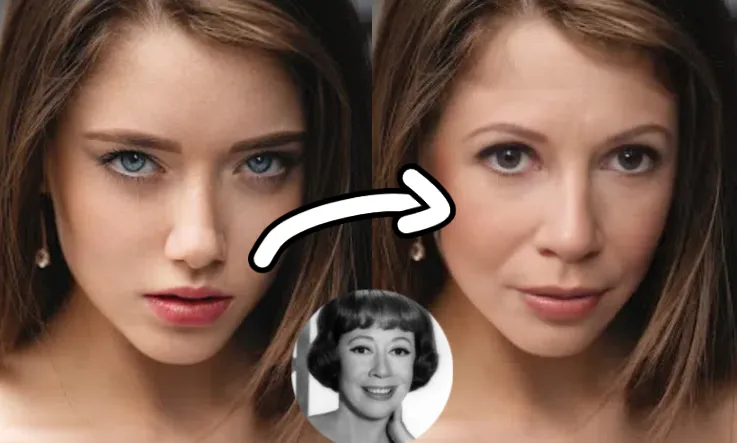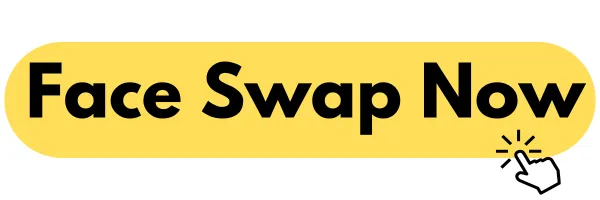Imogene Coca deepfakes
With the rapid development of artificial intelligence technology, a controversial phenomenon - Deepfakes has attracted widespread attention. Among them, "Imogene Coca deepfakes" has become a hot topic.

- Alexander Reed
- 7 min read

 Imogene Coca Deepfakes: Unraveling the Implications and Challenges
Imogene Coca Deepfakes: Unraveling the Implications and Challenges
In the digital age, the emergence of deepfakes has become a significant concern, and the phenomenon of “Imogene Coca Deepfakes” is no exception. Imogene Coca, a renowned figure in the entertainment industry, has unfortunately become the subject of such manipulated digital content. This article delves into the details of Imogene Coca Deepfakes, exploring their creation, the far-reaching impacts they have, and the potential strategies to address this growing issue video face swap ai.
I. Understanding Imogene Coca and the Advent of Deepfakes
Imogene Coca was a celebrated actress and comedian with a remarkable career that spanned various mediums. Her unique talent and charm left an indelible mark on the entertainment landscape. However, with the rapid advancement of technology, specifically the development of deepfake techniques, her likeness has been misused in ways that were unimaginable in the past.
Deepfakes, in essence, are synthetic media where a person’s appearance, voice, or both are manipulated using artificial intelligence algorithms. In the case of Imogene Coca Deepfakes, her facial features, expressions, and even her voice might have been replicated and altered to create content that appears to be her but is, in fact, completely fabricated. These algorithms work by training on a vast amount of data related to the target individual. For Imogene Coca, it could involve analyzing numerous video clips, images, and audio recordings of her performances to learn the nuances of her appearance and vocal patterns.
II. The Creation Process of Imogene Coca Deepfakes
The creation of Imogene Coca Deepfakes typically involves several steps. First, a large dataset of her genuine media content is amassed. This includes her classic television shows, stage performances, and any available audio-visual recordings. The more comprehensive and diverse the dataset, the more accurate the deepfake can potentially be.
Once the dataset is collected, advanced machine learning algorithms, such as generative adversarial networks (GANs) or variational autoencoders (VAEs), are employed. GANs, for instance, consist of a generator and a discriminator. The generator attempts to create new content that mimics Imogene Coca’s appearance and behavior, while the discriminator tries to distinguish between the real and the fake. Through an iterative process of training, the generator gets better at creating convincing deepfakes as it learns from the discriminator’s feedback.
In addition to facial manipulation, if the deepfake involves her voice, techniques like voice cloning are used. This requires analyzing her vocal characteristics, such as pitch, tone, and accent, and then using algorithms to synthesize a voice that sounds remarkably similar to hers. The combination of facial and vocal deepfakes can create highly deceptive content that can easily mislead viewers and listeners who are not aware of the technology’s capabilities.
III. The Impacts of Imogene Coca Deepfakes
A. Personal and Professional Reputation For Imogene Coca herself, these deepfakes can have a devastating impact on her posthumous reputation. Even though she may no longer be alive to experience the immediate consequences, her legacy and the way she is remembered by the public can be severely distorted. False content could depict her in unflattering or inappropriate situations, making it difficult for new generations to have an accurate understanding of her true contributions to the entertainment industry.
Moreover, if such deepfakes were to surface during her active career, it would have undoubtedly affected her professional opportunities. Producers, directors, and audiences might have been misled by the false content, leading to a potential loss of trust in her abilities and integrity.
B. Social and Cultural Implications On a broader social and cultural level, Imogene Coca Deepfakes can disrupt the collective memory and cultural narrative. Her work was an important part of the entertainment heritage, and any false representation can skew the way society views that era of entertainment. It can also create confusion among the general public about what is real and what is fabricated, especially when it comes to historical and cultural references.
Furthermore, these deepfakes can have an impact on the perception of authenticity in the digital age. As more and more such manipulated content appears, people may become increasingly skeptical of all digital media, which could undermine the trust we place in legitimate cultural and artistic works.
C. Ethical and Legal Ramifications The creation and dissemination of Imogene Coca Deepfakes raise serious ethical and legal questions. Ethically, it is wrong to use someone’s likeness without their consent, especially to create false and potentially harmful content. It violates the principles of respect for individuals and their rights to control their own image and reputation.
Legally, the situation is complex. While there are existing laws regarding defamation, privacy, and intellectual property, the specific application to deepfakes is still being debated. The rapid evolution of the technology has outpaced the development of comprehensive legal frameworks to address these new forms of media manipulation. For example, determining whether a deepfake constitutes defamation can be challenging, as it requires establishing that the false content has caused actual harm to the subject’s reputation and that the creator had malicious intent.
IV. Strategies to Combat Imogene Coca Deepfakes
A. Technological Solutions
- Detection Tools: Researchers are working on developing advanced deepfake detection tools. These tools analyze various aspects of the media, such as the consistency of facial expressions, the flow of movements, and the spectral characteristics of the voice. By identifying anomalies that are typical of deepfakes, they can flag potentially fabricated content. For example, some detection tools focus on the microexpressions on a face that are often not accurately replicated in deepfakes.
- Watermarking and Authentication: Implementing digital watermarking techniques can help identify the origin and authenticity of media content. Watermarks can be embedded in the original content of Imogene Coca’s works, making it easier to trace and verify if a piece of content is genuine or has been manipulated. Additionally, authentication mechanisms can be set up to require proper authorization before any content related to her is uploaded or shared.
B. Legal Measures
- Updating and Enforcing Laws: The legal system needs to be updated to specifically address deepfakes. This includes clarifying the definitions of what constitutes a deepfake, how it relates to existing laws such as defamation and privacy, and what the appropriate penalties are for creating and spreading such content. Law enforcement agencies should also be equipped with the necessary training and resources to effectively investigate and prosecute cases involving deepfakes.
- International Cooperation: Since the internet has no boundaries, international cooperation is crucial in dealing with Imogene Coca Deepfakes. Different countries may have different legal approaches to deepfakes, and coordinating efforts can ensure that creators and spreaders of such content are held accountable regardless of their location.
C. Public Awareness and Education
- Raising Awareness: The public needs to be made aware of the existence and dangers of deepfakes. Through media campaigns, educational programs in schools and universities, and public service announcements, people can be informed about how deepfakes are created, how to identify them, and why they are a threat to our digital ecosystem.
- Media Literacy: Teaching media literacy is essential. People should be educated about the basics of digital media production, including how deepfakes are made, so that they can critically analyze and question the authenticity of the content they encounter. This will help them make more informed decisions when consuming digital media and avoid being easily misled by Imogene Coca Deepfakes or any other similar content.
V. Conclusion
The phenomenon of Imogene Coca Deepfakes is a vivid example of the challenges posed by deepfakes in the digital age. It not only affects the reputation and legacy of an individual like Imogene Coca but also has far-reaching implications for our social, cultural, ethical, and legal landscapes. By implementing a combination of technological solutions, legal measures, and public awareness and education initiatives, we can hope to mitigate the impact of these deepfakes and safeguard the integrity of our digital media environment. As technology continues to evolve, it is essential that we remain vigilant and proactive in addressing this growing problem to ensure that the memories and works of great individuals like Imogene Coca are respected and preserved in their true form.